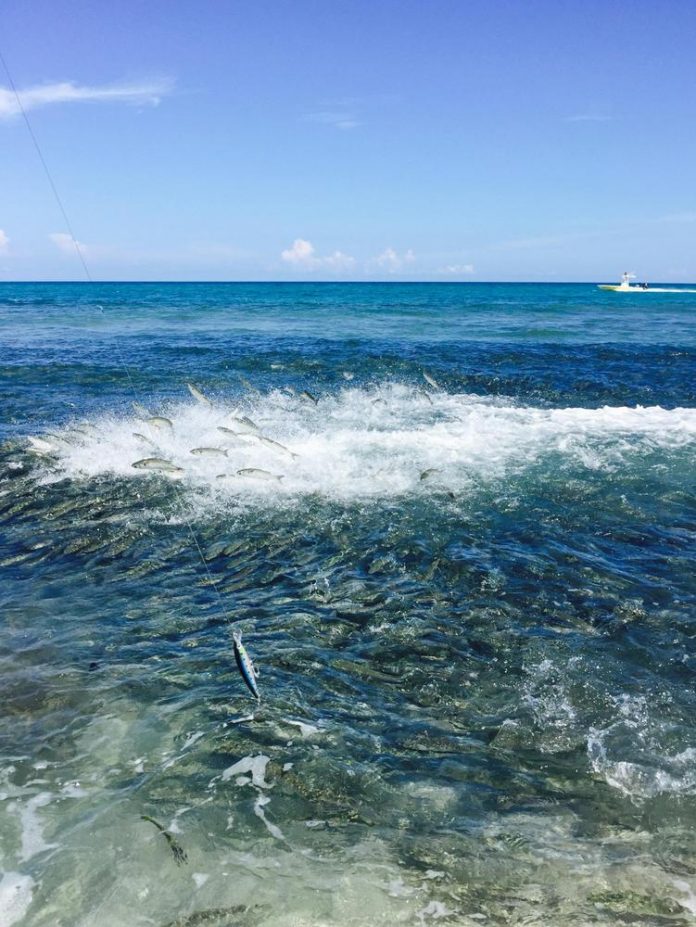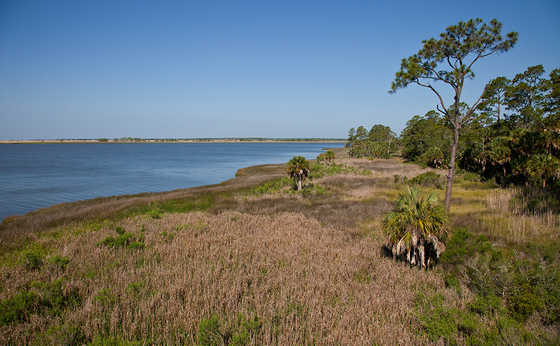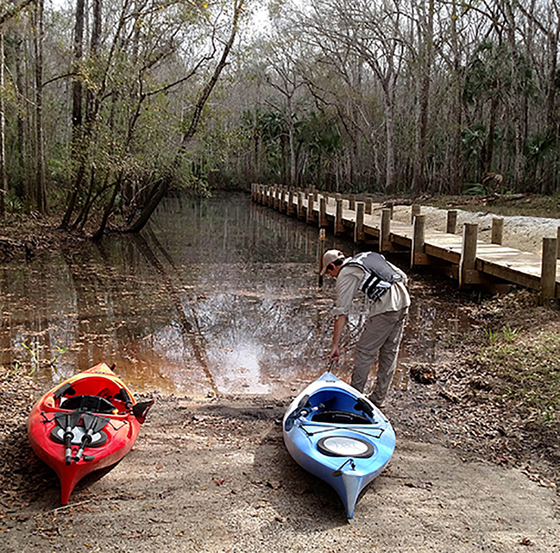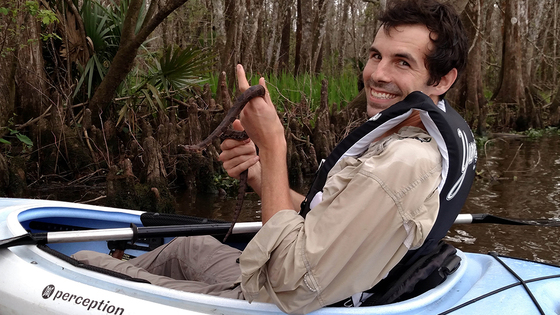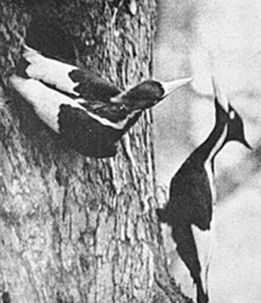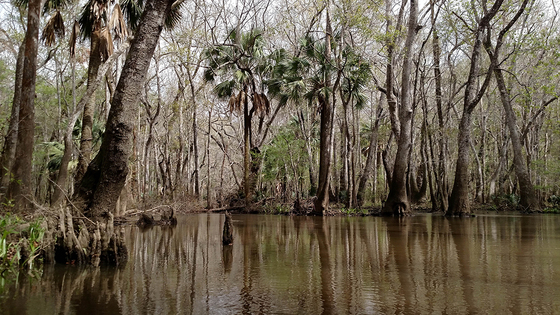|
By Peter Kleinhenz I don’t know about you, but when I’m out in nature, I’m seeking moments of magic. These are instances when time seems to freeze and the most basic, but powerful, emotions take over once nature decides to spontaneously pull the curtain back and unveil something extraordinary. These days, I’m based in Tallahassee where the opportunities to encounter a magical experience seem limitless. Perhaps this is true, but I’m going to let you in on a little secret. Your likelihood of being mystified by the natural world increases significantly the closer you get to a river that I have fallen deeply in love with: the Apalachicola.
The view from a tower at Apalachicola River Wildlife and Environmental Area’s Sand Beach shows the range of habitats on the Apalachicola River from salt marshes to upland pine forests, photo by Liz Sparks
The Apalachicola River winds approximately 110 miles from the bottom of a dam on the Florida-Georgia line to the Gulf of Mexico. Along its course, it carves through immense bluffs peppered with the bones of ancient marine mammals, meanders past forests that seem to stretch to infinity, snakes through a labyrinth of dark floodplain forest and, ultimately, pours into the Gulf of Mexico where it nourishes one of the most productive estuaries on earth.
A carnivorous sundew unfurls its leaves to snare flying insects, photo by Liz SparksThis life serves as a magnet for me whenever I get the urge to wander (always). I spend a lot of my free time driving the dirt roads that traverse Apalachicola National Forest, taking friends on hikes in the region and donating blood in the depths of the floodplain swamps that line the river. These moments, with the exception of mosquito encounters, are fantastic, but they aren’t magic. For that, I need to take you a bit farther downstream. The Florida Fish and Wildlife Conservation Commission (FWC) manages 63,257 acres of the lower Apalachicola River in aptly named Apalachicola River Wildlife and Environmental Area (ARWEA). It doesn’t get much more wild than this in Florida. Wet prairie, pine flatwoods and miles of swamp only accessible by boat define this protected area. It was in the latter region where one of my most memorable magic moments in Florida took place.
Peter Kleinhenz (pictured) and Liz Sparks (photographer) prepare for their paddling trip on the Apalachicola River
I was paddling down Saul’s Creek, a sizable tributary of the Apalachicola, in a kayak next to my coworker, Liz Sparks. We were scouting “Trip 12,” the newest of 12 paddling trails available within ARWEA. While days like that really don’t feel like work, there was, in fact, work to be done. Liz and I needed to check out smaller tributaries that fed the creek to see if any made sense as side trips. With the sun’s rays kept in check by a light breeze, we turned our boats to the northeast and made our way up Johnson Creek. An open canopy of tupelo, bald cypress and cabbage palm rapidly closed. Trees bent over the sluggish brown water, shading the bright, happy day into one that was quieter and more introspective. Liz hung back behind me 30 or 40 feet. All was silent, save for the wind tickling the leaves and the sound of paddles slicing through the water. The width of the creek became inversely proportional to the size of the cypress trees that rose up from the muck around us. This was wild.
Peter holds a brown water snake while paddling up a tributary of the Apalachicola River, photo by Liz Sparks
We stopped when the stream became so shallow that we had to scoot across fallen tree trunks. A few small rivulets emanated from the depths of the swamp. Liz followed one. I stayed put. With no sounds of traffic, planes or other people, my mind wandered. How many people had been back here lately? There were no beer cans, no discarded fishing line and, really, no sign of people whatsoever. As such, it was easy to go back in time.
Ivory-billed woodpeckers, circa 1935, now considered extinct, photo from Creative Commons
Peter experienced his magic moment on this tributary of the Apalachicola River, photo by Liz Sparks
Liz came back into view. She too must have had a reflective moment, since we exchanged few words until we arrived back in the main channel of Johnson Creek. The water carried us away from this place, a place that has managed to stay with me far longer than I thought a swamp ever could. In an age when even earth’s wildest places are changing, it’s comforting to know that at least one window to the past remains clear. Sure, much of the Apalachicola Basin has undergone significant change over the years. But, in this forgotten corner deep within ARWEA, the past and present seem one and the same. That, to me, is magic.
Paddlers explore one of the 12 paddling trails that wind through ARWEA, photo by Liz Sparks
While you can certainly visit Trip 12 like I did, 11 other paddling trips permit access to much of ARWEA, where magic moments can be plentiful. Several other paddling trails exist throughout the state. With cooler weather upon us, there is no better time to explore a wildlife management area near you. Whether you’re a hunter, photographer, bicyclist or simply want to experience a moment of magic yourself, you can help us celebrate 75 years of Florida wildlife management areas by checking out a wildlife management area this fall. See you out there! |
||||||
Learn more about WMAs and the 75th Anniversary celebration. |
- Jay Mastry - March 26, 2024
- Captains Corner, Gorta - March 23, 2024
- Dave Zalewski - March 12, 2024
